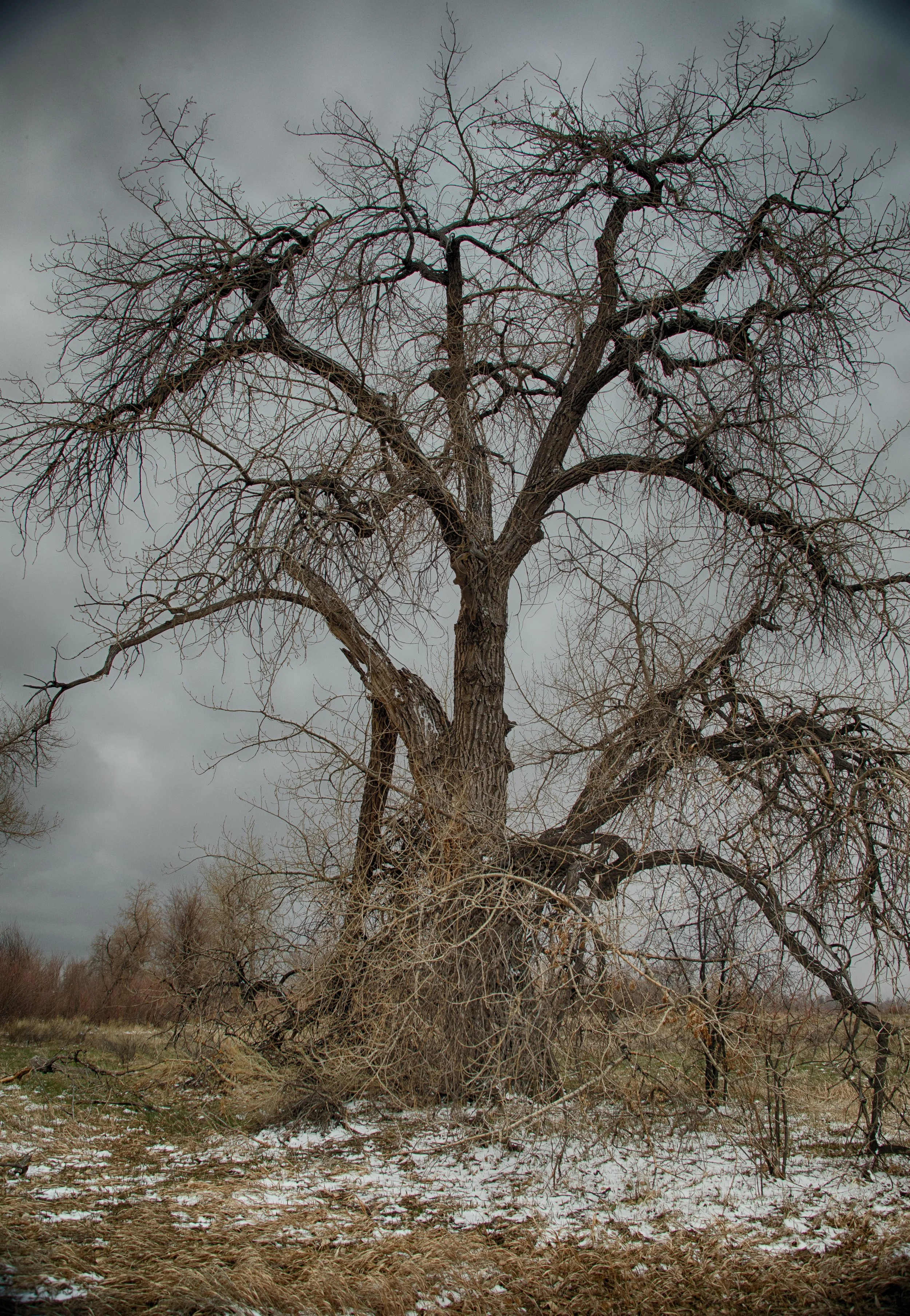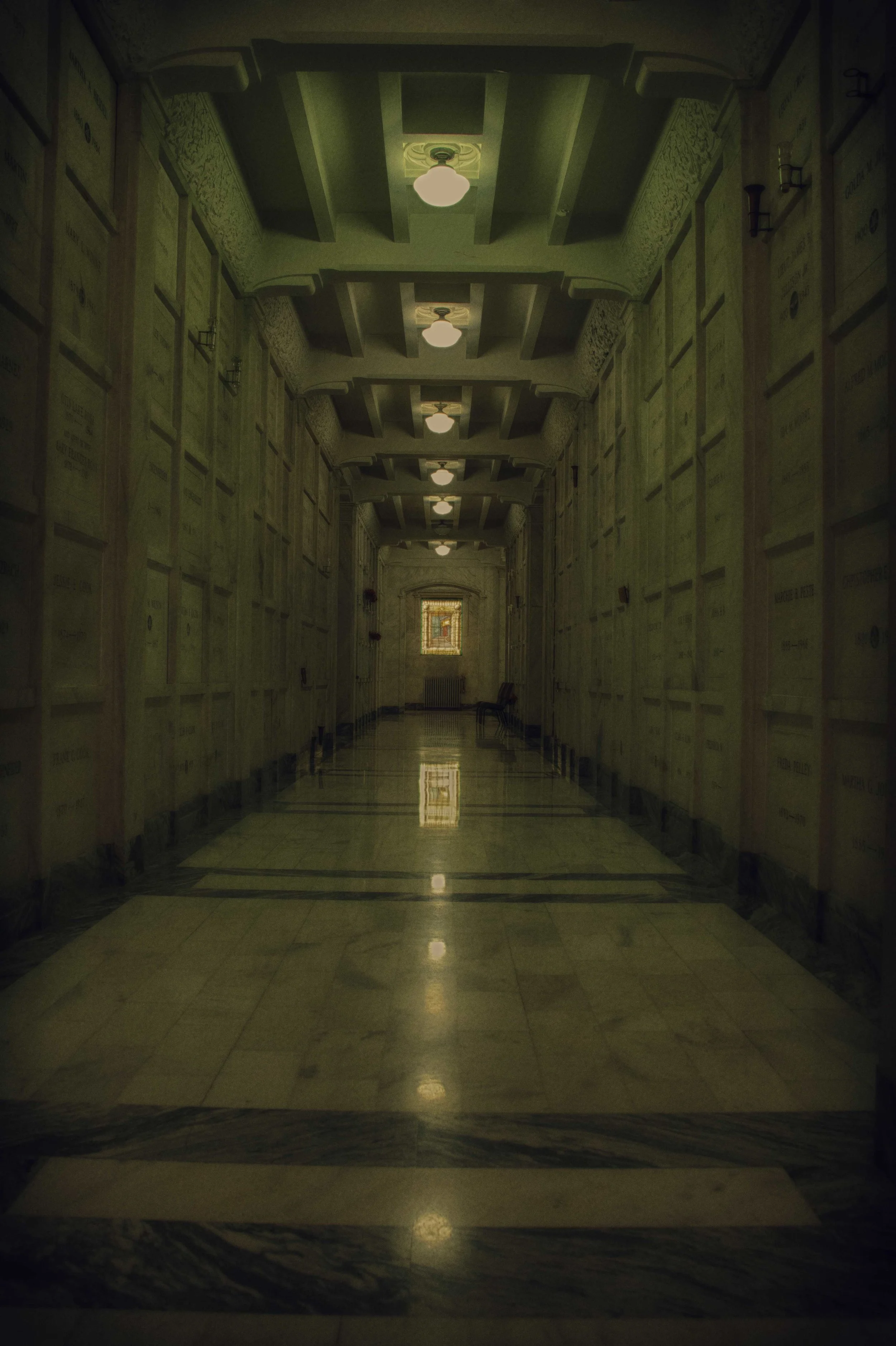Walking home from McDonald’s one night, he thought there was ample time to safely cross the boulevard, though against the light and oncoming traffic. A grave miscalculation. Both legs and pelvis shattered. Witnesses say his body was thrown 50 feet in the air before landing on the pavement.
For several days, the moment of impact and its immediate aftermath were blocked from his memory. But upon waking in his hospital bed early one morning, he re-lived physical sensations from the accident. He left me a chilling voicemail: “…It was horrible—horrible. I am alive, and I shouldn’t be but I am...”
When I come to visit, the hospital room is dim from drawn curtains. Members of his medical team are constantly checking, feeding, changing —monitors, TV, instruments, tubes.
Upon entering the room, his surgeon notices me and asks him who I am. He answers “My younger brother... We don’t live close but we’re close.” Trying to make conversation, the surgeon asks, “Were you good to him when you were growing up?” A pause, then “Not really.”
A lifetime of accumulated, often painful memories compress and distill into a brew of conflicting emotions as I sit in that cramped hospital room. Though I traveled 2000 miles to offer personal comfort and support, I feel an urgent need to escape the room’s confines.
When the urge becomes overwhelming, I take my leave. I’m not sure my brother even notices, as his mind drifts in and out of an opioid induced haze.
Upon escaping the hospital complex, I take a full breath. Walking south, I arrive at a large open space adjacent to a cemetery. Colorado’s April sky is gray and silent, with snow flurries swirling like tiny ghosts.
I find myself attracted to trees scattered about the prairie landscape and begin photographing their leafless forms.
I imagine the branches’ tips exchanging electrical impulses with other trees.
I fall into a meditative state in which passing minutes recede into the background.
Looming over the landscape is an unwelcoming structure reminiscent of institutions in which residents are not allowed to leave. I subsequently learn it is a mausoleum dubbed Tower of Memories. After breaking ground in 1929, the original builder went bankrupt before finishing the project. Because the structure at that point housed remains of many bodies, another builder completed it. Today, it holds about 6,000 crypts and 5,000 niches for ashes.
On-line sources are silent as to the name Tower of Memories. Does it refer to memories of those who departed the earthly realm? Or to the memories about those dead that are kept alive by visitors? In his book Man’s Search for Meaning, Viktor Frankl says that we die three times – when our heart stops, when our remains are interred or cremated, and finally when we are forgotten.
When scientists first studied the structure of nerve cells that comprise the human brain, they noted their resemblance to microscopic trees (as shown in the micro-photograph below). The term “dendrites”, which describes projections from these cells, derives from the Greek word Dendron, for “tree.” Thousands of dendrites exist on the surface of some nerve cells in the brain. Because dendrites can change shape and size quickly, some research suggests that they are where memories are created and stored.[1] According to this research, when an animal experiences an event, the structure of a dendrite may change. Otherwise, memory of the event is not stored.
[1] https://news.northwestern.edu/stories/2014/10/activity-in-dendrites-is-critical-in-memory-formation/
Scientists are also discovering that trees have their own sort of nervous system capable of memory, learning, and communication with other trees. They exhibit the ability to retain information about their state at a given point in time and to access it subsequently. And via changes in their growth patterns, trees and other plants can exhibit memories of past traumas, such as from removal of a bud. Plants also have the capacity to epigenetically “forget” memories that no longer serve their well-being.
Moving among the silent trees, my agitation subsides. The camera is itself an instrument of memory. Photographing without clear purpose helps to consolidate my seventy plus years of fractured and contradictory recollections.
Neuroscientists have found evidence that PTSD can impair memory in humans. For decades, my father locked up, in his own “tower of memories, many horrors as a World War 2 infantry soldier. Repressing those memories came at the cost of damping down his emotions. I understand this survival mechanism may have blinkered my dad to adverse family dynamics that I experienced.
I can more readily access the emotional content of these dynamics than their factual details. After all these years, do I hold onto residual anger toward my brother? I admit that I do. Do I also feel compassion toward him in his current vulnerable and compromised state? Yes. I recognize that I can choose how to be in relationship and can accept the murky stew of contradictory emotions.
I linger in the damp cold until the flurries thicken to flakes wet enough to risk my camera. Returning to the hospital, I sit again at his bedside. Setting aside residual inner turmoil, I take his hand gently in mine. He offers no physical or verbal response.
Later that week, I leave for home. Six months pass.
My brother recovers slowly in a rehab facility; his cognitive state is not helped by lack of stimulation and his needs being met by care providers all those months. Against advice of his medical care team and family, he insists on being discharged. Despite my misgivings, I return to help him transition back to his apartment. I hope also to offer his daughters a brief respite from caregiving and to take steps to forge a more authentic relationship with him.
When I pick him up at the rehab facility, I learn that home health care services have not been initiated to support his transition. With him leaning heavily on his walker, we make our way haltingly to my rental car with his few possessions. I drive him to his apartment, which has lain vacant with shades drawn. In the dim light, I see piles of clothes and dirty dishes. Cardboard boxes filled with random objects inhibit access to the kitchen area. The crowded squalor feels overwhelming. I don’t know where to begin, if only to make the space safe for someone at risk of falling.
From past experience clearing out his two storage lockers, I know that it would be hopeless to enlist his support to cull his possessions. And though he desperately needs money, I wouldn’t dare suggest he sell his beloved Moto Guzzi motorcycle, which holds many memories of better days. He must know that he hasn’t the strength to ride again. Nonetheless, he seems content to be home, surrounded by artifacts of his pre-accident life.
We spend hours discussing next steps. I realize that my own cognition is being adversely infected by the surrounding visual chaos, as if cotton balls are being stuffed into my brain. Making my escape, I return to the Tower of Memories.
But this time, I enter the Tower itself. I am alone. Through still and heavy air, I wander along silent corridors whose walls are stacked with crypts bearing remains of those departed.
Along other walls, urns holding ashes are stored in small cubbies, most of which also contain a tableau of memorabilia.
I wonder, are these displays intended to trigger visitors’ memories of the departed?
Or does placing familiar objects inside their now permanent homes offer comfort to spirits contained within?
And if so, do the displays help diminish their feelings of claustrophobia from being so confined, like the djinn in Alladin’s lamp?
Later that week, my brother and I part company on poor terms, after I express pent up anger over his ungrateful treatment of his daughters. Returning to my home, I continue to feel responsible to help with his situation, if only for their sake. A month passes. In the absence of adequate home medical support, his cognitive and physical capacity to manage his living situation deteriorates. Yet he refuses to move into assisted living.
What is “home” after all? It’s not just a physical structure filled with personal belongings, embedded within family, friends, and community. Ideally, it’s also a collection of memories associated with feelings of familiarity, refuge, and comfort.
His apartment, crammed as it is with reminiscent objects, reminds me of the thousands of miniature tableaux frozen in time within the Tower of Memories. Each object must light up a dendrite in his brain. I understand why he does not want to leave.
Another six months pass.
After another hospitalization and rehab, he has been moved to a studio apartment at an assisted living facility. Most personal possessions are gone. He clings to the thought of riding his motorcycle again, one more time, one day.














